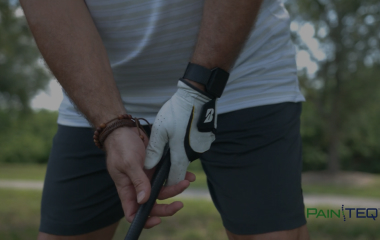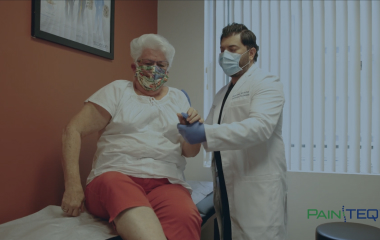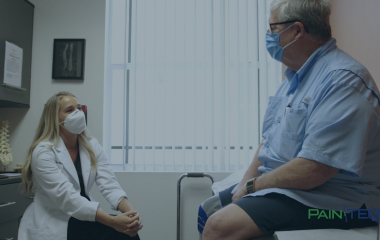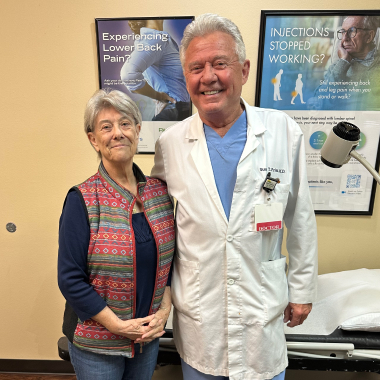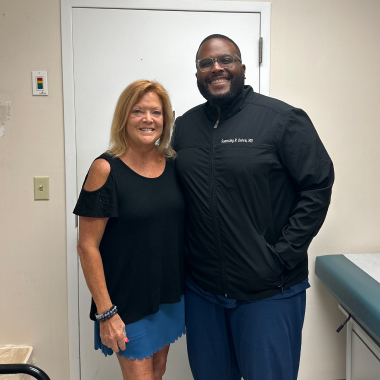The LinQ® Procedure is Designed to Get You Back to Life,
With Key Benefits Over Traditional SI Joint Surgery:
- Short Outpatient Procedure – Available in a Physician’s Office
- No Metal Implanted
- Faster Recovery Time Than Traditional Fusion
- Posterior Approach Away From Nerves and Large Blood Vessels
Is the LinQ SI Joint Stabilization System Right for You?
Simply fill out this request form and a representative in your area will personally reach out to you with more information.
"*" indicates required fields
- CAUSES
- COMMON SYMPTOMS
Causes of SI Joint Instability and Pain
The pain starts when your SI joint becomes inflamed. There are several reasons it could happen, but Hypermobility (too much movement) and Hypomobility (too little movement) are at the root of the problem. The average range of motion is only 4 degrees, meaning that even the slightest change can cause pain.
Hypermobility: The ligaments that encase the SI joint may be disrupted due to injury or degenerate due to age, allowing the joint to have excessive motion. This excessive motion may inflame and disrupt the joint and surrounding nerves.
Hypomobility: Often caused by arthritis, this triggers the bones to rub against one another and create extreme pain and may inhibit mobility.

Common Symptoms
Lower back pain is a common symptom that affects many people during their lifetime. For some, lower back pain can be an acute, short-term problem. Others experience chronic, long-term symptoms that can limit mobility and effect their quality of life. Either way, the cause may or may not be your SI joint.
SI joint disorders require appropriate interpretation of your history, clinical exam results, and imaging studies. Often hip pathology and/or lumbar pathology can coexist with SI joint pathology. A healthcare provider trained in diagnosis and treatment can help diagnose your condition accurately and get you on the path for lasting relief.
To determine whether your pain is caused by your SI joint or another source, talk to a trained physician.

Have You Tried These and Still Have Pain?
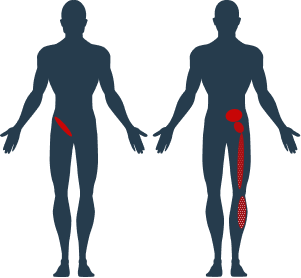
Physical Therapy
Physical therapy consists of a physical evaluation and an individualized treatment plan to help ease your SI joint dysfunction and pain. Your physical therapist may tailor a program for you that may include strengthening exercises, range-of-motion or stretching exercises, and massage therapy. These various techniques help stabilize the joint, improve mobility in the joint, hip and lower back, and reduce the stress load.
Chiropractic Care
Adjustments by a chiropractor can help relieve pain caused by SI joint dysfunction by using techniques that move your muscles and joints. Chiropractors use various techniques from different schools of thought to align joints above and below the SI joint and throughout the body to try to help reduce pain. They may also recommend exercise, bracing, and other modalities as part of their treatment to help reduce pain and improve function.
Medication
Your healthcare provider may prescribe non-steroidal anti-inflammatory drugs (NSAIDs), opioids, or other medications to help relieve your SI joint pain. Muscle relaxants may also be prescribed to help reduce muscle spasms. While over-the-counter pain medications may help treat the symptoms of SI joint pain, they do not change the underlying physical impairment.
Spinal Fusion
Spinal fusion is often performed if SI joint dysfunction has been misdiagnosed as a spinal condition. It involves permanently fusing two or more vertebrae together to prevent any movement that may worsen pain. Spinal fusion is designed to mimic the normal healing process of broken bones. However, since the SI joint is not part of the spine, this surgery is often wrongfully administered and provides little to no long-term benefit.
Radiofrequency Ablation
This procedure uses radio waves to temporarily destroy the nerve fibers that carry pain signals in the joint, therefore reducing pain. No published studies have shown long lasting relief using radiofrequency ablation.
Injection of the SI Joint
Steroids are powerful anti-inflammatory medications that can be injected directly into the SI joint to reduce inflammation and pain. Because the SI joint is deeper within the body than most joints, these injections are usually given in a hospital setting, under live X-ray guidance. These injections are limited because the steroids can weaken your joint’s bones and tendons. Most health plans will only authorize a limited number per year. SI joint injections are often a temporary solution, lasting a few days or weeks.
Epidural Steroid Injection
Steroid injections are a common treatment option for many forms of lower back and leg pain. Unlike other injections, epidural steroid injections are not administered directly into the SI joint. Instead they are injected into the epidural space that surrounds the spinal cord and nerve roots. They are designed to control pain by reducing inflammation in and around the nerve roots. Epidural injections are often a temporary solution, lasting a few days or weeks.
Spinal Cord Stimulation
Spinal cord stimulation allows patients to send electrical impulses to their spine when they feel pain. Traditional spinal cord stimulators replace the sensation of pain with light tingling. However, newer devices can help drown out the pain sensation altogether. These devices may have positive effects on patients suffering from a spinal condition, but it may not result in lasting relief for patients with SI joint dysfunction.

Are You Ready For Long-Lasting Low Back Pain Relief?
The minimally invasive LinQ SI Joint Stabilization System may deliver the relief you are searching for – aiming to remove the source of your pain, not mask it.
The LinQ procedure involves placing one non-metal implant — roughly the size of an almond — into the SI joint to stabilize the dysfunctional joint.
The entire procedure is done through a single, small incision on the patient’s back. Patients typically leave the hospital the same day of surgery and can resume daily activities within a few weeks.
Real LinQ SI Joint Patients
What is LinQ?
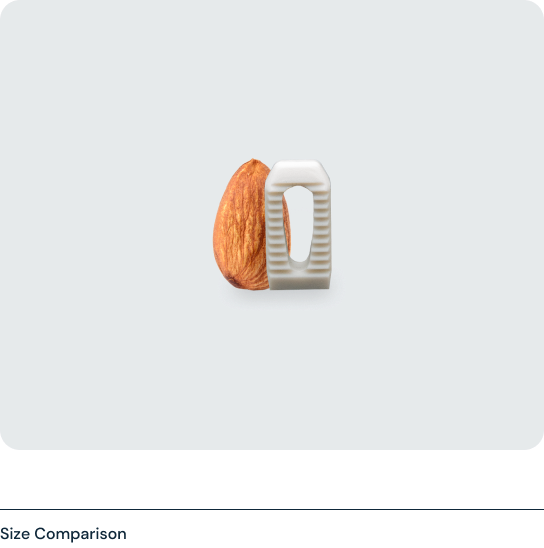
The LinQ SI Joint Stabilization System provides SI joint dysfunction patients with a minimally invasive solution to combat pain. After a thorough diagnostic process, physicians can help alleviate, and in many cases eliminate, chronic pain by placing a single LinQ allograft into the SI joint.
This single implant helps patients immediately regain joint stability – and with its large graft window, the LinQ SI Joint Stabilization System helps create an ideal environment for long-term fusion.
Recent LinQ SI Joint
Patient Reviews
Here’s what some of our patients are saying.
FAQ
We are here to help you feel comfortable with the minimally-invasive LinQ SI Joint Stabilization Procedure.
Does it require an overnight hospital stay?
No, LinQ is a same-day outpatient procedure. That means you can go home shortly after you wake up and recover from surgery.
If I’ve had a prior fusion or laminectomy, am I still a candidate?
Yes! It is not uncommon for patients to have a fusion or laminectomy if their SI joint dysfunction was misdiagnosed as a spinal condition. Patients may still be a candidate for LinQ even after a prior fusion and laminectomy.
What about other procedures (spinal cord stimulation, radiofrequency ablation, or injections)?
Yes, you may still be a candidate for LinQ if you’ve had these therapies and still experience pain. A recent independent study showed that posterior SI joint fusion with LinQ demonstrated potential to rescue patients that have had inadequate pain relief from these previous therapies.
Can I still have MRI’s and CT scans?
Yes, LinQ contains absolutely no metal, so you can still have MRIs and CT scans without worry.
Will I get immediate pain relief?
Some patients may experience immediate pain relief following their surgery. However, these exact results cannot be guaranteed. It may take up to a few weeks to fully recover, although LinQ does have a shorter recovery time than traditional fusion surgeries.
What If I have pain on both sides?
It is rare, however studies show anywhere from 30-50% of patients have bilateral pain. It takes a skilled clinician to diagnose SI joint dysfunction. If it is determined that a patient genuinely experiences pain on both sides due to their SI joint, two LinQ implants may be utilized.
Featured Articles
Best Cardio for SI Joint Dysfunction: Staying Active While Managing Pain
Valerie’s Breakthrough with LinQ: Overcoming SI Joint Pain
The LinQ Procedure: Tammy Rediscovers an Active Life After 12 Years of Pain
Get More Info Directly from a Clinician in Your Area
Simply fill out this request form and a representative in your area will personally reach out to you with more information.
"*" indicates required fields

